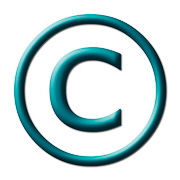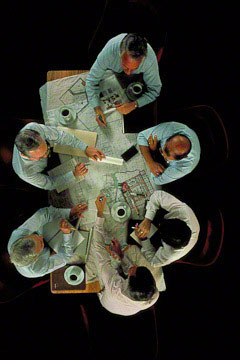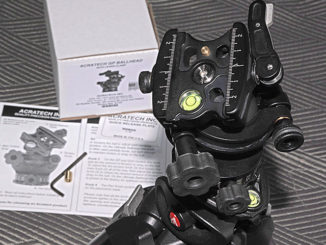
I know I shouldn’t be, but I am always surprised at how little people know about copyright. To me and many others — pros and amateurs — the C in Copyright is part of the basic ABCs of photography. You can find all sorts of appropriate principles for A and B, but C is definitely for Copyright.
Do you really need to put your copyright notice on your image? The technical answer is no, at least for images produced after the late 80s, but it does come with a big BUT.
According to Circular 22 put out by the Copyright Office, the “Berne Convention Implementation Act of 1988 reduced formalities (of establishing copyright to one’s work), most notably making the addition of the previously mandatory copyright notice optional.” Now, to the big BUT…
If someone steals your image, you have no recourse except to trust in the goodness of the thief’s heart and his wonderful ethics. A lot of good that will do you … that and a cup of overpriced coffee.
Embedding your copyright notice into your image metadata, putting it on your website, requesting in writing that those who have negotiated rights to use your photograph post your copyright notice, putting this information in your invoices and deliveries to a website other than your own, etc., all serve to put people on notice that you value the copyright to your images and you are doing everything you can to protect that right.
To make sure I wasn’t giving out erroneous information, I went to long-time friend and intellectual-property-rights expert, attorney David MacTavish. While he was ASMP’s legal counsel, he worked closely with the Copyright Office to help effect improvements in the original Copyright Act of 1976.
“While a copyright owner’s work will no longer fall into the public domain, as it once did,” David says, “a copyright infringer can use the absence of notice to let a wrongdoer claim innocent infringement. That is, ‘I didn’t know the work was copyrighted.’”
So, Why Do I Want to Copyright My Image?
“Hey, what do I care about copyright?” you ask. “I’m just doing this for fun…”
 © 2010 Zann and Pinkerton Photography.
© 2010 Zann and Pinkerton Photography.
All Rights Reserved
We’ve already answered that question, but let’s cite some examples:
1. Do you want XYZ T-shirt company to steal your photograph and make thousands of dollars off it, giving you nothing?
2. Do you want someone appropriating your photograph and claiming it as his/her own work?
3. Are you comfortable with someone downloading a photograph of your daughter or granddaughter and using it in an ad about teen pregnancy or AIDS?
4. How about a photograph that Arnie made back in 1983, several years before the Berne Convention Implementation Act of 1988 that Getty copied in several iterations? Presumably, they were making quite a few stock sales. Unfortunately, the agency for whom Arnie made the photograph could not find the record of the copyright registration, so Arnie could not sue for damages (more on this later).
When we wrote Getty, they disclaimed any impropriety or guilt, yet we noticed that they very quickly removed all knock-offs from their available images. We did our part and made sure this image was registered with the Copyright Office right away after we discovered the theft (copyright infringement).
Without your copyright on your images, people figure it’s part of public domain and free for the taking.
David also brings up another excellent point, “You also have to consider that not using a notice will likely have future ramifications if Congress passes an orphan works bill. I’ve heard that the feeling is this will likely happen no matter what owners’ rights groups do, so any copyright owner not using a notice is placing her/his work in jeopardy because the work won’t be identifiable.”
I won’t get into that can of worms here, but for those interested in the whole orphan works challenge for photographers, see ASMP’s detailed pages.
Make Your Copyright Stick
The one way to make sure your copyright sticks is to register your images with the Copyright Office. They have a wealth of information on their website, including a link to eCO (electronic Copyright Office) where, for a modest fee, you can bulk register thousands of your images online.
As our friend David points out, in cases when a copyright infringement is discovered, “At some later date, the owner contacts a lawyer who tells them the work(s) must be registered before a lawsuit can be filed. This has taken up to 18 months, and even with electronic registration, it is taking almost a year for certification. I find very few copyright owners have the funds or want to pay the additional money to speed up the registration process that can be done in preparation for litigation.”
Sure, you can go after the company and let them know that their use of your photograph is unauthorized, but realistically, you have no teeth against a big corporation. You are only an annoying gnat. On the other hand, registering your copyright may entitle you to statutory damages. This has several ramifications:
~ If you bring suit and win (and a registered copyright greatly increases your chances), the copyright infringer will not only have to pay you all lost income for the image (and then some), but they will be responsible for paying all your legal fees; and
~ An intellectual-property lawyer may be more willing to take your case on a contingency basis because of the above.
First, however, you have to have a good, legal copyright notice.
Copyright Notice
It’s amazing the number of photographers, even pros, who don’t know a legal form of a copyright notice, let alone all three:
© YYYY Name
Copyright YYYY Name
Copr. YYYY Name
Thus, mine would be © 2010 Margo Taussig Pinkerton. All Rights Reserved. The “All Rights Reserved.” is not absolutely necessary, but it does serve as a strong reminder to others that your image is copyrighted at the moment you click the shutter and that you are the person who owns all rights to it.
So, how do you make that cute little © symbol with the BIG impact?
It’s really very easy.
PC shortcut for ©: ALT-0169
On keypad, not with numbers across top:
Use FN (function key)-NUM (number lock) to use number pad on laptop (if you can’t find it, start with the M key and look carefully for the zero there, too) or on certain PC laptops, you’ll have to activate the number lock, then press ALT-0169
Mac shortcut for ©: OPT/ALT-g
So, © Margo Taussig Pinkerton 2009 doesn’t count, nor does 2009 Margo Taussig Pinkerton. Even © Margo Taussig Pinkerton (without the year) doesn’t count, unless it is for a “pictorial, graphic, or sculptural work, with accompanying textual matter, if any” that “is reproduced in or on greeting cards, postcards, stationery, jewelry, dolls, toys, or any useful article.” according to the Copyright Act of 1976.
For More Information
The United States Copyright Office is a power branch of our judicial system. On www.copyright.gov, there is a wealth of information, including Copyright Basics (that I checked for possible changes in the law), FAQs for the uninitiated (and an excellent refresher course for the experienced), and even a direct link to eCO (the electronic Copyright Office) where you can register your photographs and websites online for a lower fee than by snail mail.
So…
You can protect your images by placing your copyright on them right during your importing process. Just add your copyright notice to your metadata template and use it as part of your importing process. Check out your importing/imaging program of choice, and there should be detailed instructions of how to edit or make your own metadata template.
To learn more about Barefoot Contessa Photo Adventures–join seasoned pros Margo Pinkerton and Arnie Zann in stunning locations and have lots of fun seeking your own vision and learning how to better make images.
by Margo Taussig Pinkerton
(aka, TBC–The Barefoot Contessa)
2010 Article Updated: © 2016 Margo Taussig Pinkerton. All rights reserved.





Leave a Reply